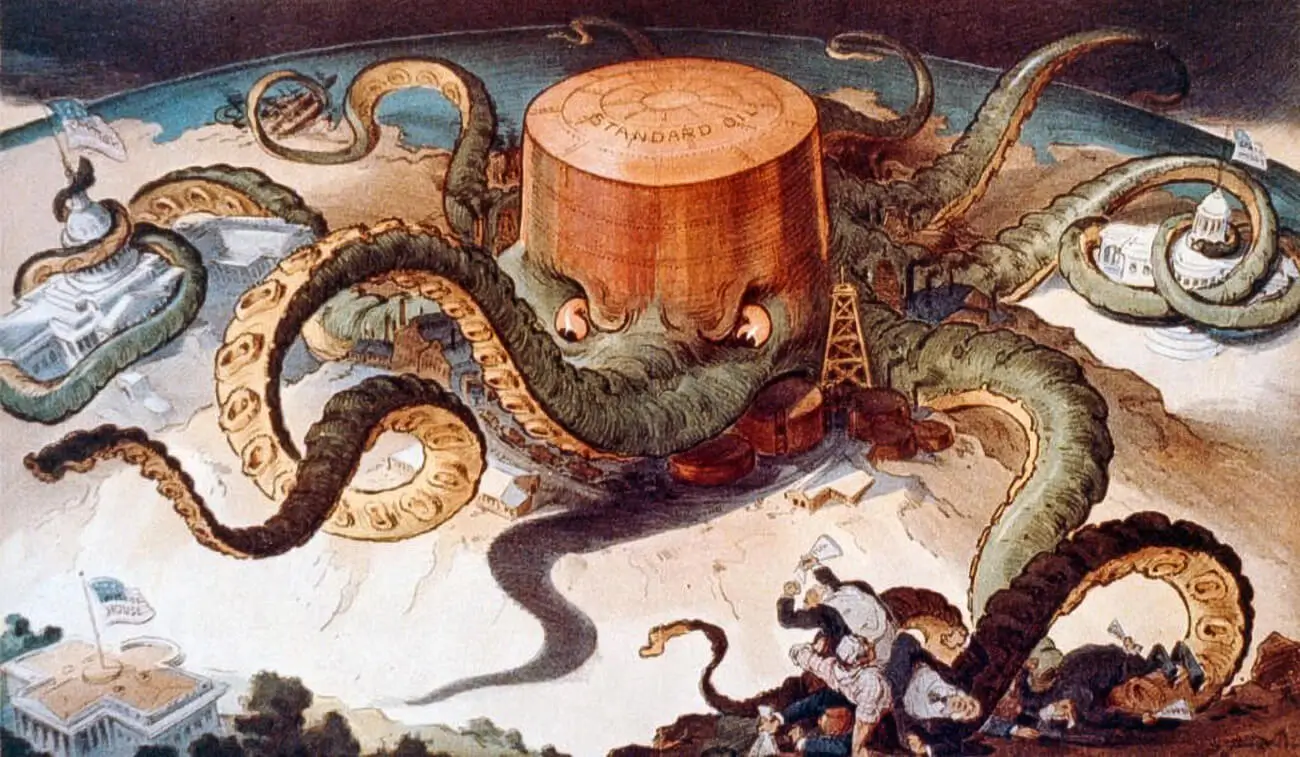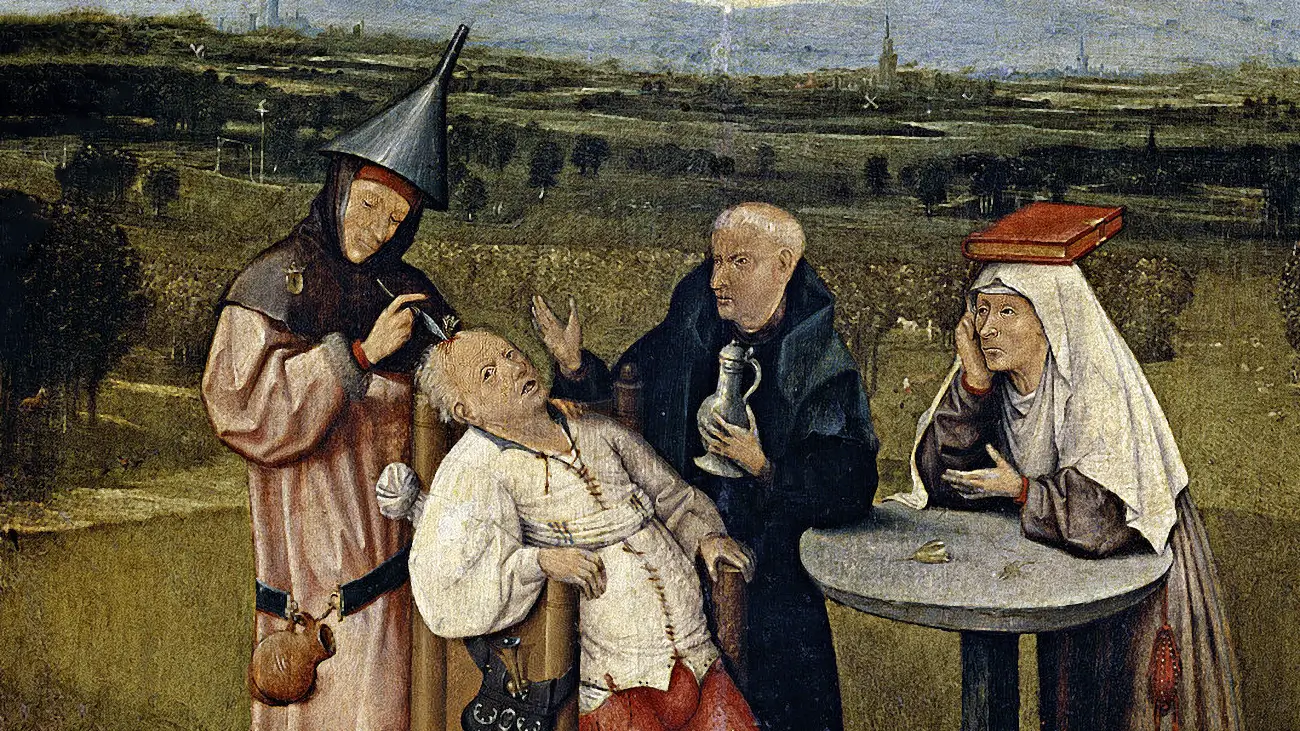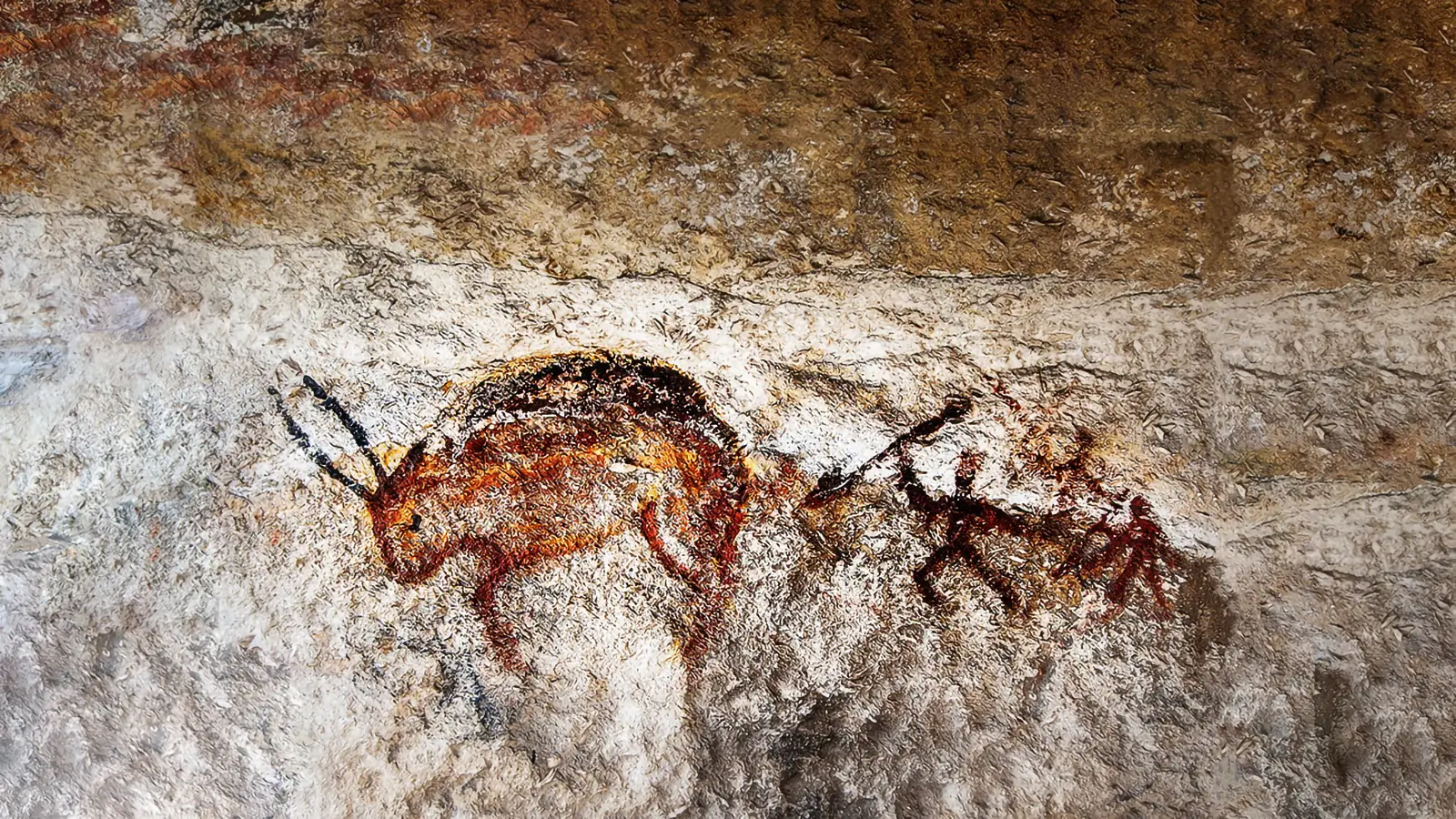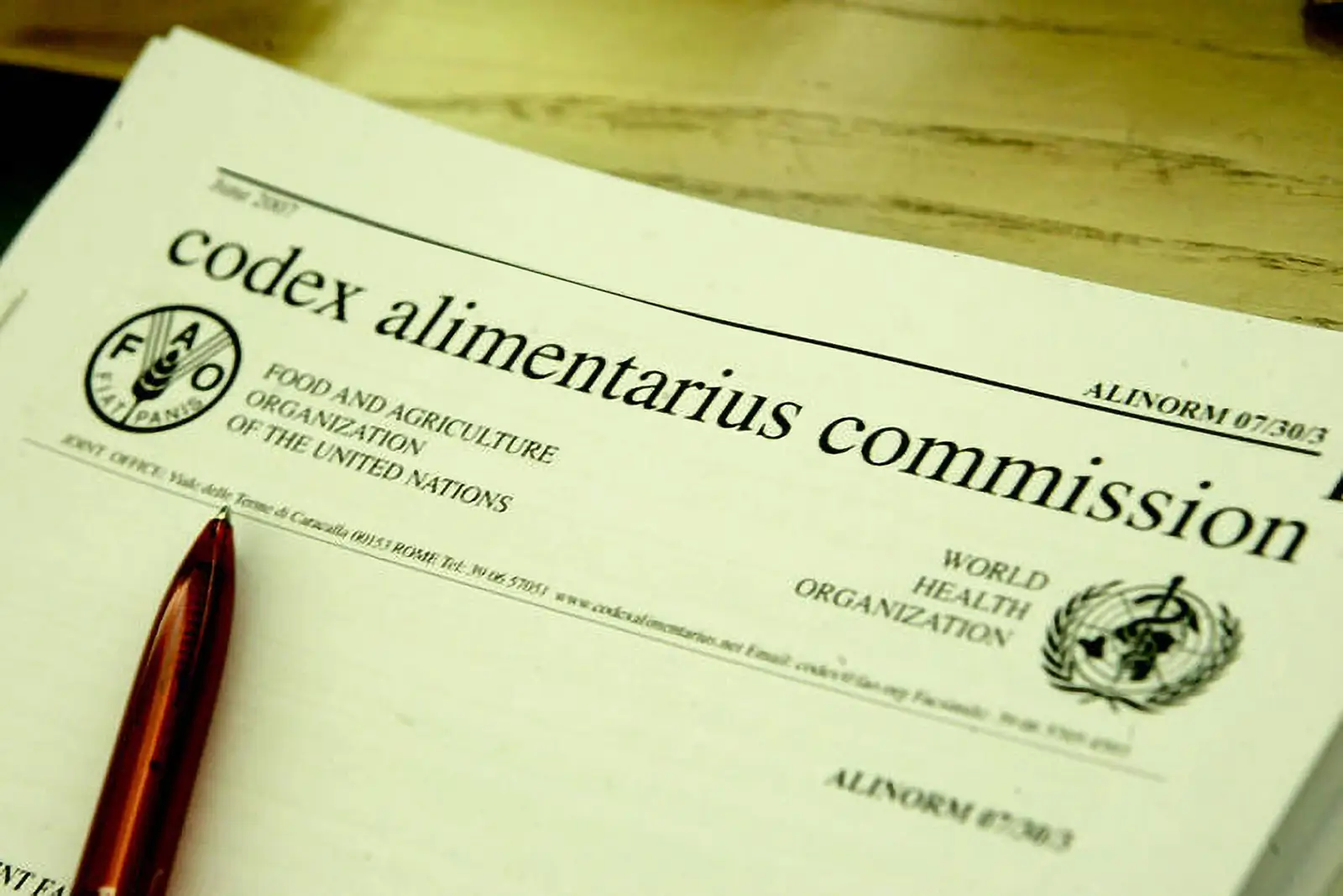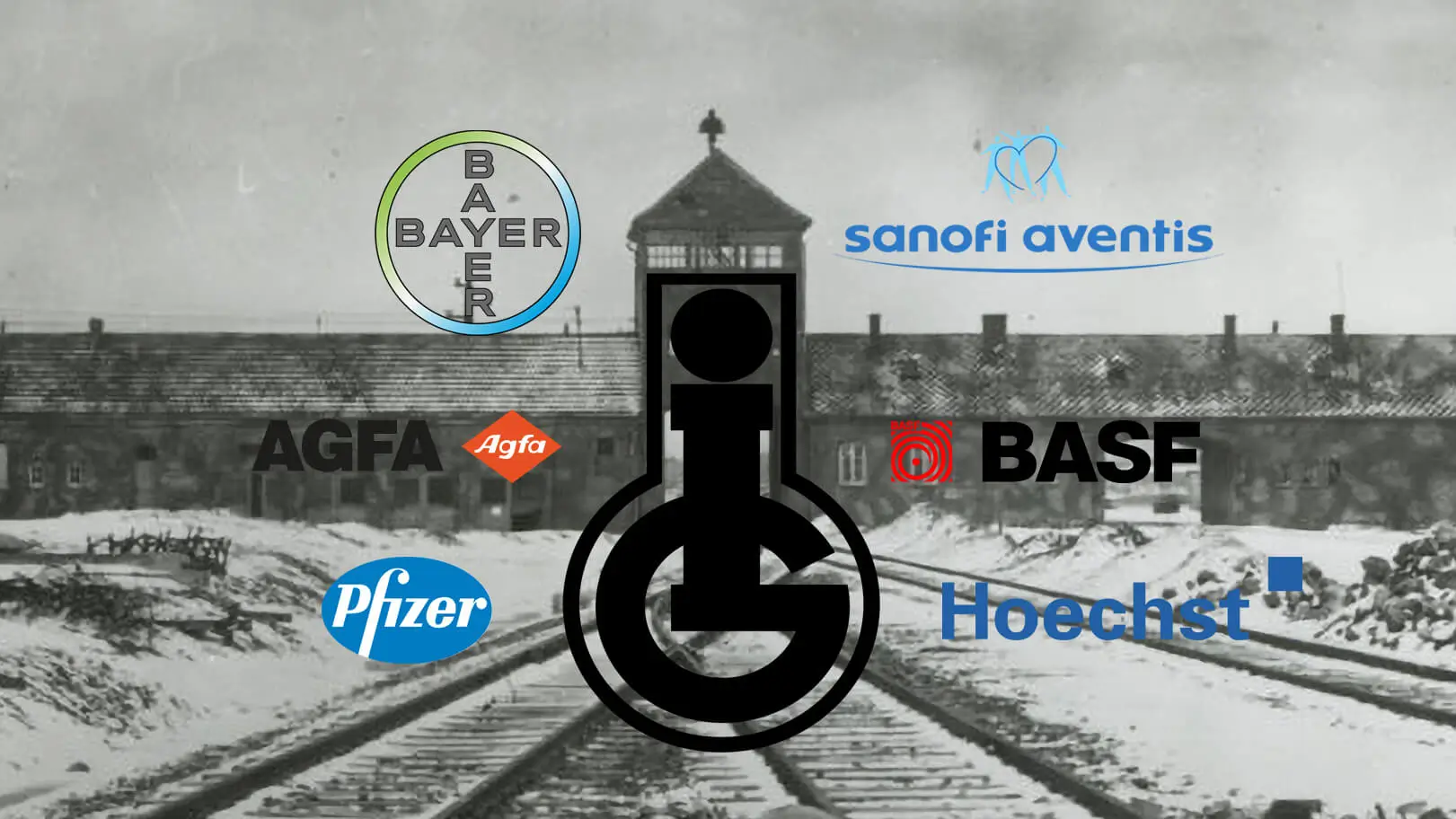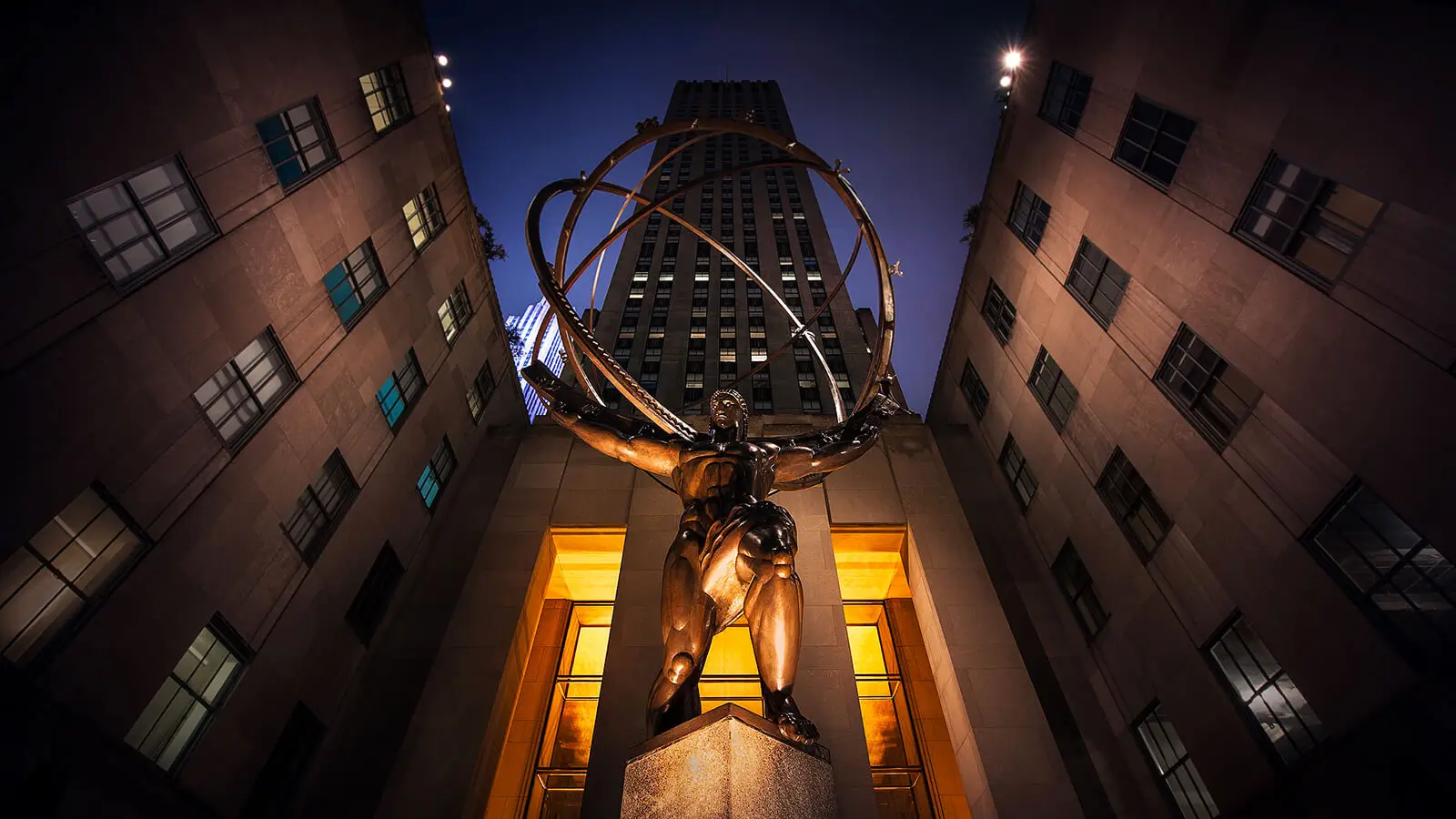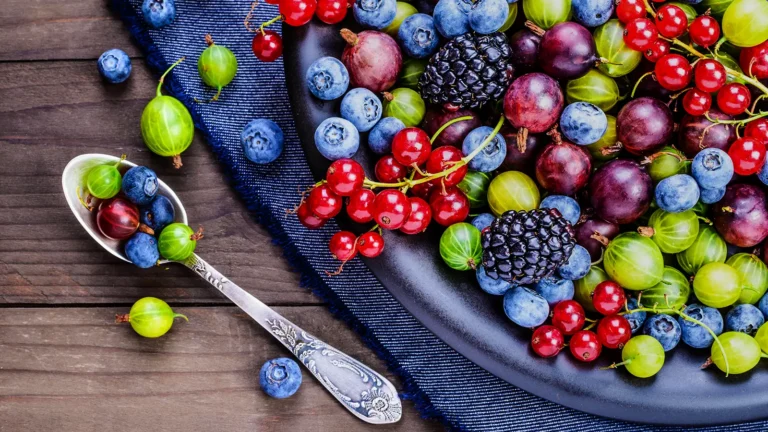Die Geschichte von Big Pharma- Bayer (IG Farben), FDA und dem AIDS Virus
Bayer zahlte Hunderte Millionen Dollar, um einen drei Jahrzehnte dauernden Skandal zu beenden, bei dem das Unternehmen HIV-kontaminiertes Blut an Bluter verkaufte, von denen später Tausende an AIDS starben.
Milos Pokimica
Geschrieben von: Milos Pokimica
Medizinisch Begutachtet Von: Dr. Xiùying Wáng, M.D.
Aktualisiert am 4. August 2023Die Ernährungswissenschaft hat bereits vor Jahrzehnten alle Zusammenhänge zwischen Wohlstandskrankheiten und dem Verzehr tierischer Nahrungsmittel erklärt. Die meisten unserer Killer Nummer eins sind vermeidbar, aber es besteht kein Interesse daran, den aktuellen Geschäftszweig zu ändern. Die gesamte verfügbare Wissenschaft wird der Öffentlichkeit vorenthalten, und in Wirklichkeit spielt das keine Rolle.
Was den meisten Menschen bewusst ist, ist reine Propaganda. Ärzte sind gut, sie müssen einen hippokratischen Eid leisten, sie sind da, um einen zu heilen und zu helfen, und natürlich wird uns die Medizin eines Tages von allen Krankheiten befreien. Normalerweise, wenn Menschen mit der wahren Geschichte der großen Pharmakonzerne konfrontiert werden und die Wahrheit erkennen dass die Regierung selbst über ein Netz zur Unterdrückung der Wissenschaft verfügt und dass das Interesse des einzelnen Menschen nicht ihr vorrangiges Ziel ist, Normalerweise sagen sie, dass alles Vergangenheit ist. Heute haben wir mehr Demokratie und Freiheiten mit besserer staatlicher Kontrolle und so weiter.
Die Antwort ist nein. Wir haben noch weniger Freiheiten als nach dem Zweiten Weltkrieg. Wir wurden in Schulen einer Gehirnwäsche unterzogen und von den Medien mit psychologischer Forschung zur sozialen Kontrolle durchdrungen, aber sonst ist nichts anders. Die gleiche Struktur existiert und existiert nicht erst seit dem mittleren Alter, sondern sogar schon davor.
Ich möchte ein weiteres aktuelles Beispiel anführen. Sie werden wahrscheinlich nie erfahren, dass Bayer (IG Farben) "zig Millionen" Dollar gezahlt hat, um einen drei Jahrzehnte währenden Skandal zu beenden, bei dem das Unternehmen HIV-verseuchte Blutprodukte an Bluter verkaufte, von denen Tausende später an AIDS starben. Bayer ist schließlich gezwungen, Schecks an Personen zu unterschreiben, die an AIDS erkrankt sind, weil die Bayer-Abteilung Cutter Biological in den 80er Jahren Bundesgesetze missachtete und schwule Männer mit hohem Risiko, intravenös Drogenabhängige und Gefangene als Spender des Blutes rekrutierte, das Cutter später zur Herstellung von Faktor VIII und IX verwendete. Dabei handelt es sich um ein Medikament, das Gerinnungsprodukt, das Bluter benötigen, um nicht zu verbluten. 1997 wurde Bayer dazu verurteilt, 600 Millionen in einen Entschädigungsfonds für HIV-positive Bluter einzuzahlen. Etwa 20.000 Personen hatten sich über das Blut mit HIV infiziert.
Ironischerweise wurde über die neue Hämophilie-iPhone-App von Bayer berichtet, ebenso wie über die Hämophilie-Forschungsförderung von Bayer für die Universität von Florida.
Am 16. Juli 1982 vermuteten die US-amerikanischen Zentren für die Kontrolle und Prävention von Krankheiten (CDC), dass drei Bluter an AIDS erkrankt seien. Epidemiologen begannen zu glauben, dass sich das Virus durch Blutermedikamente verbreitete, die sie einmal pro Woche injizierten. Die Medikamente wurden aus großen Pools gespendeten Plasmas verschiedener Personen hergestellt. Ein Großteil davon wurde vor der obligatorischen HIV-Testung gesammelt, oft von Homosexuellen und Drogenkonsumenten und in einigen Gefängnissen. Ohne einen Infektionstest konnten sie nicht feststellen, ob die Plasmaspender das Virus in sich trugen. Im Januar 1983 bestätigte der Leiter der Cutter Biological-Abteilung von Bayer in einem Brief, dass:
"Es gibt starke Hinweise darauf, dass AIDS durch ... Plasmaprodukte auf andere Menschen übertragen wird."
Diese Briefe tauchten in Studien auf und wurden von einigen der investigativen Journalisten gefunden, die später die Geschichte öffentlich machten. Im Mai 1983 begann ein Konkurrent von Cutter mit der Herstellung eines hitzebehandelten Konzentrats, das das Virus abtötete, so dass Frankreich und viele andere Länder beschlossen, alle Importe von Gerinnungskonzentraten zu stoppen. Cutter fürchtete um den Verlust von Verbrauchern, und so heißt es in einem beigefügten Memo: "Wir wollten den Eindruck erwecken, dass wir unser Produkt weiter verbessern, ohne ihnen zu sagen, dass wir bald auch ein hitzebehandeltes Konzentrat anbieten würden". Im Juni 1983 hieß es in einem Schreiben von Cutter an Vertriebshändler in 20 Ländern, dass:
"AIDS ist in vielen Ländern zum Zentrum irrationaler Reaktionen geworden", und dass "dies für uns besonders besorgniserregend ist, weil es unbegründete Spekulationen gibt, dass bestimmte Blutprodukte dieses Syndrom übertragen können".
Das war eine Lüge, und in vielen Ländern wurde immer noch ein altes Konzentrat verwendet. Im Februar 1984 erhielt Cutter als letztes der vier großen Blutproduktunternehmen die US-Zulassung für den Verkauf von erhitztem Konzentrat. Sie warteten so lange wie möglich. Doch selbst nachdem Cutter mit dem Verkauf des neuen Produkts begonnen hatte, wurde noch mehrere Monate lang das alte Medikament weiter hergestellt. Der Grund dafür war, dass das Unternehmen mehrere Festpreisverträge hatte und der Meinung war, dass das alte Produkt billiger zu produzieren sei. Bayer-Beamte (die im Namen von Cutter antworteten) antworteten mit einer weiteren Lüge: "Weil einige Kunden die Wirksamkeit des neuen Medikaments anzweifelten", hätten einige Länder die Zulassung des neuen Medikaments nur langsam unterstützt. Dann logen sie, indem sie behaupteten, es gäbe einen Mangel an Plasma, das für die Herstellung des Medikaments verwendet wird. Taiwan beispielsweise war ein Land, das noch immer das alte HIV-Medikament erhielt. Hsu Chien-wen, ein Beamter der taiwanesischen Gesundheitsbehörde, erzählte 2003, dass Cutter erst im Juli 1985 eine Genehmigung für den Verkauf des erhitzten Medikaments beantragt hatte. Das war eineinhalb Jahre später als in den Vereinigten Staaten. In Hongkong beispielsweise benötigte Cutter in den 1980er Jahren nicht einmal eine Zulassung, sondern nur eine Importlizenz, um das neuere Produkt einführen und verkaufen zu können, was normalerweise eine Woche dauert. In einer Firmensitzung wird das festgehalten:
"Es gibt überschüssige Bestände".
Dies führte in Wirklichkeit dazu, dass das Unternehmen beschloss:
"Überprüfen Sie erneut die internationalen Märkte, um festzustellen, ob mehr von diesem Produkt verkauft werden kann."
Wegen der fehlenden Kontrolle und der Korruption beschloss Cutter, die Lagerbestände älterer HIV-positiver Medikamente in Ländern der Dritten Welt zu entsorgen, während das neue, sicherere Produkt im Westen verkauft wurde. Wenn sich einige der Menschen mit AIDS anstecken, können sie Aspirin gegen die Schmerzen nehmen. Und natürlich gibt es alle Länder der Dritten Welt, so dass es sich gut mit eugenischen Programmen zur Entvölkerung des Planeten vereinbaren lässt. Als Bluter in Hongkong plötzlich positiv auf HIV getestet wurden, warfen einheimische Ärzte die Frage auf, ob Cutter "mit AIDS verseuchte" Medikamente in weniger entwickelte Länder einschleuste. Cutter wies den Vorwurf zurück und betonte, dass ältere Medikamente "kein ernsthaftes Risiko" darstellten und es sich um "dasselbe gute Produkt handelte, das wir seit Jahren liefern". Hongkong glaubte der Lüge nicht, und als der örtliche Vertriebshändler nach dem neueren Produkt fragte, antwortete Cutter, dass das gesamte neue Produkt in die USA und nach Europa geliefert werde. Für Hongkong und andere Länder der Dritten Welt könnten sie eine Ausnahme für eine kleine Menge für die "einflussreichsten Patienten" machen. Damit sind einflussreiche Personen gemeint, die möglicherweise ein Problem für sie darstellen könnten. Wenn Sie also der Sohn eines Politikers sind, werden sie Ihnen das neue, sichere Zeug geben.
Die US-amerikanische Lebensmittel- und Arzneimittelbehörde hat dazu beigetragen, die Nachricht aus dem Blickfeld der Öffentlichkeit zu halten. Die Regierung ist nicht dazu da, Sie zu schützen, und war es auch nie. Im Mai 1985 rief Harry M. Meyer Jr., der bei der FDA für Blutprodukte zuständig ist und der Ansicht ist, dass die Unternehmen gegen eine freiwillige Vereinbarung verstoßen haben, das alte Medikament vom Markt zu nehmen, die Direktoren der Unternehmen an und wies sie an, dem nachzukommen. Aus Cutters internen Notizen von dieser Sitzung geht hervor, dass Meyer verlangte, dass das Problem gelöst wird:
"Still und leise gelöst, ohne den Kongress, die medizinische Gemeinschaft und die Öffentlichkeit zu alarmieren"
stellte auch fest, dass die FDA die Angelegenheit "schnell und in Ruhe" lösen wollte. Auch zu dieser Zeit, Cutter offiziellen schrieb, dass:
"Es scheint, dass es im Fernen Osten keine Märkte mehr gibt, auf denen wir mit dem Verkauf größerer Mengen von nicht erhitzten Medikamenten rechnen können".
Sie verkaufen AIDS-verseuchte Medikamente so lange wie möglich ohne Empathie. Die Auswirkungen all dessen sind unmöglich zu berechnen, da es keinen HIV-Test gab, so dass wir nicht wissen, wie viele Menschen mit HIV infiziert waren, bevor Cutter mit dem Verkauf seiner sichereren Medizin begann oder danach. Cutter verkaufte das alte Medikament nach Februar 1984 auch in Argentinien, Indonesien, Japan, Malaysia und Singapur. Nachdem Cutter mit dem Verkauf des sichereren Produkts begonnen hatte, lieferte das Unternehmen mehr als 100.000 Fläschchen mit unerhitztem Konzentrat im Wert von mehr als $4 Millionen. Die Verkäufe wurden fortgesetzt, weil Cutter zum einen die Bestände des älteren Medikaments abbauen wollte und zum anderen aufgrund von Festpreisverträgen, bei denen das Unternehmen glaubte, das ältere Produkt sei billiger herzustellen. Das US-Justizministerium hatte nie gegen Führungskräfte des Unternehmens ermittelt. Bayer hat in der Vergangenheit sogar Heroin für Kinder vermarktet. Das ist das Ausmaß der psychopathischen Natur dieser Leute.
Verweise:
Ausgewählte Passagen aus einem Buch: Pokimica, Milos. Zum Veganer werden? Rückblick auf die Wissenschaft Teil 2. Kindle-Ausgabe., Amazon, 2018.
- McHenry L., Khoshnood M. Blutgeld: Bayer's inventory of HIV-contaminated blood products and third world hemophiliacs. Account Res. 2014;21(6):389-400. doi: 10.1080/08989621.2014.882780. PMID: 24785997.
- Patienten mit Josefson-D.-Hämophilie erheben Klage gegen Bayer wegen kontaminierter Blutprodukte. BMJ. 14. Juni 2003;326(7402):1286. doi: 10.1136/bmj.326.7402.1286-g. PMID: 12805147; PMCID: PMC1151015.
Zusammenhängende Posts
Haben Sie Fragen zum Thema Ernährung und Gesundheit?
Ich würde gerne von Ihnen hören und sie in meinem nächsten Beitrag beantworten. Ich freue mich über Ihren Beitrag und Ihre Meinung und freue mich darauf, bald von Ihnen zu hören. Ich lade Sie auch dazu ein Folgen Sie uns auf Facebook, Instagram und Pinterest für weitere Inhalte zu Ernährung und Gesundheit. Sie können dort einen Kommentar hinterlassen und sich mit anderen Gesundheitsbegeisterten austauschen, Ihre Tipps und Erfahrungen teilen und Unterstützung und Ermutigung von unserem Team und unserer Community erhalten.
Ich hoffe, dass dieser Beitrag für Sie informativ und unterhaltsam war und dass Sie bereit sind, die gewonnenen Erkenntnisse anzuwenden. Wenn Sie diesen Beitrag hilfreich fanden, dann es teilen mit Ihren Freunden und Familienangehörigen, die ebenfalls davon profitieren könnten. Man weiß nie, wer auf seinem Weg zur Gesundheit vielleicht etwas Anleitung und Unterstützung braucht.
– Das könnte Ihnen auch gefallen –

Über Ernährung Lernen
Milos Pokimica ist Doktor der Naturheilkunde, klinischer Ernährungsberater, Autor für medizinische Gesundheit und Ernährung sowie Berater für Ernährungswissenschaften. Autor der Buchreihe Zum Veganer werden? Rückblick auf die Wissenschafter betreibt auch das Natürliche Gesundheit website GoVeganWay.com
Medizinischer Haftungsausschluss
GoVeganWay.com bietet Ihnen Rezensionen der neuesten Ernährungs- und Gesundheitsforschung. Die bereitgestellten Informationen stellen die persönliche Meinung des Autors dar und sind weder als Ersatz für professionelle medizinische Beratung, Diagnose oder Behandlung gedacht noch impliziert. Die bereitgestellten Informationen dienen ausschließlich Informationszwecken und sollen nicht als Ersatz für die Beratung, Diagnose und/oder medizinische Behandlung durch einen qualifizierten Arzt oder Gesundheitsdienstleister dienen.Ignorieren Sie niemals professionellen medizinischen Rat oder verzögern Sie die Suche nach medizinischer Behandlung, weil Sie etwas auf GoVeganWay.com gelesen oder über GoVeganWay.com darauf zugegriffen haben
Nehmen Sie NIEMALS Änderungen im Lebensstil oder irgendwelche Änderungen vor, die eine Folge von etwas sind, das Sie auf GoVeganWay.com gelesen haben, bevor Sie einen zugelassenen Arzt konsultieren.
Bei einem medizinischen Notfall rufen Sie sofort einen Arzt oder die Notrufnummer 911 an. GoVeganWay.com empfiehlt oder unterstützt keine bestimmten Gruppen, Organisationen, Tests, Ärzte, Produkte, Verfahren, Meinungen oder andere Informationen, die darin erwähnt werden könnten.
Herausgeber-Tipps –
Milos Pokimica ist Doktor der Naturheilkunde, klinischer Ernährungsberater, Autor für medizinische Gesundheit und Ernährung sowie Berater für Ernährungswissenschaften. Autor der Buchreihe Zum Veganer werden? Rückblick auf die Wissenschafter betreibt auch das Natürliche Gesundheit website GoVeganWay.com
Neueste Artikel –
Pflanzenbasierte Nachrichten
-
Some Dogs Can Sort Toys By Function, Says New Study On Canine ‘Label Extension’
am November 5, 2025
-
Courgette, Leek, White Bean And Kale Stew
am November 5, 2025
-
Precision Fermented Dairy Proteins Receive ‘No Questions’ Approval From FDA
am November 4, 2025
-
This One-Pan Ramen Is Ready In 30 Minutes
am November 4, 2025
-
How to Make Fresh Vanilla Hemp Milk at Home
am November 3, 2025
-
Animal Farming Is ‘World’s Biggest Cause Of Food Waste,’ Says Report
am November 3, 2025
-
Butter Bean And Sweet Papas Coconut Stew
am November 2, 2025
Top-Gesundheitsnachrichten – ScienceDaily
- Scientists uncover meditation’s hidden side effectsam November 5, 2025
Meditation is widely praised for its mental health benefits, but new research shows that it can also produce unexpected side effects for some people—from anxiety and dissociation to functional impairment. Psychologist Nicholas Van Dam and his team found that nearly 60% of meditators experienced some kind of effect, and about a third found them distressing.
- Most Americans don’t know alcohol can cause canceram November 5, 2025
Most U.S. adults don’t realize alcohol raises cancer risk, and drinkers themselves are the least aware. Scientists say targeting these misbeliefs could significantly reduce alcohol-related cancer deaths.
- A breakthrough map reveals how the brain really worksam November 5, 2025
Scientists have shown that brain connectivity patterns can predict mental functions across the entire brain. Each region has a unique “connectivity fingerprint” tied to its role in cognition, from language to memory. The strongest links were found in higher-level thinking skills that take years to develop. This work lays the groundwork for comparing healthy and disordered brains.
- A shapeshifting protein explains rabies’ deadly poweram November 5, 2025
Researchers discovered how rabies virus exerts massive control over host cells with very few genes. A key viral protein changes shape and binds RNA, allowing it to infiltrate different cellular systems. This adaptability could explain the power of other deadly viruses, including Nipah and Ebola. The breakthrough may lead to next-generation antivirals or vaccines.
- Cockroaches are secretly poisoning indoor airam November 5, 2025
Cockroach infestations don’t just bring creepy crawlers, they fill homes with allergens and bacterial toxins that can trigger asthma and allergies. NC State researchers found that larger infestations meant higher toxin levels, especially from female roaches. When extermination eliminated the pests, both allergens and endotoxins plummeted. The findings highlight how pest control is vital for cleaner, healthier air indoors.
- Scientists shocked to find E. coli spreads as fast as the swine fluam November 5, 2025
Researchers have, for the first time, estimated how quickly E. coli bacteria can spread between people — and one strain moves as fast as swine flu. Using genomic data from the UK and Norway, scientists modeled bacterial transmission rates and discovered key differences between strains. Their work offers a new way to monitor and control antibiotic-resistant bacteria in both communities and hospitals.
- Tiny molecules could stop glaucoma before it blindsam November 5, 2025
Scientists at Mizzou have identified two small molecules, agmatine and thiamine, that could both reveal and fight glaucoma. Their research shows these compounds are lower in glaucoma patients, suggesting they may serve as early warning markers. Even better, they might help protect retinal cells from damage, potentially slowing or stopping vision loss. The discovery could revolutionize how the disease is detected and treated.
PubMed, #Vegane Diät –
- Impact of in vitro digestion on the cytotoxicity and microbial viability of cholinesterase-inhibitor-rich vegan soups in human intestinal cell modelsam November 1, 2025
Vegan lunch soups formulated with mushroom, asparagus, leek, and sea buckthorn were previously developed by our team to provide a consistent daily intake of dietary cholinesterase inhibitors. Considering the proposed continuous consumption of these functional soups, it is essential to examine any cytotoxic responses that may occur in the gastro-intestinal tract. This work starts this topic by investigating the effect of in vitro digested soups towards selected human intestinal cells and…
- A 6-Month, Prospective, Multi-arm Study for the Efficacy of Standardized Nutraceuticals to Improve Hair Fiber Thickness and Strengtham Oktober 31, 2025
CONCLUSIONS: This study demonstrates that ingestion of these bio-specific HGNs are associated with significantly enhanced hair shaft diameter and decreased breakage, resulting in longer, stronger hair across their intended populations. These findings support the use of these HGNs for hair thinning, offering alternative options for various populations for improving hair growth and thickness.
- Consumer Acceptance of Sustainable Cat Diets: A Survey of 1380 Cat Guardiansam Oktober 29, 2025
There is increasing awareness about the adverse environmental and ‘food’ animal welfare impacts associated with the production of meat-based pet food. However, little is known about cat guardians’ acceptance of more sustainable food choices for the global population of approximately 476 million pet cats. By surveying 1380 cat guardians, this study explored feeding patterns used by guardians, determinants of their cat food choices, and their acceptance levels of more sustainable cat food…
- Consumer Acceptance of Sustainable Dog Diets: A Survey of 2639 Dog Guardiansam Oktober 29, 2025
Interest in more sustainable diets for the global population of 528 million companion dogs is steadily increasing, encompassing nutritionally sound cultivated meat, vegan, and microbial protein-based dog foods. Factors driving these alternative dog foods include lower impacts on the environment, fewer welfare problems related to intensively farmed animals and wild-caught fish, and potentially superior canine health outcomes, relative to conventional meat-based dog food. Through a […]
- Beliefs and behaviours associated with vegetarian, vegan, and gluten-free diets among Canadians capable of bearing childrenam Oktober 29, 2025
There is increased interest in self-selected exclusionary diet patterns, specifically vegetarian, vegan, and gluten-free (GF) diets, but there is a lack of research exploring the beliefs and behaviours surrounding these diets in Canadians capable of bearing children (CCBC). The goal of this study was to explore the beliefs and behaviours of CCBC who follow vegetarian, vegan, and/or GF diets using mixed methods. A self-administered online Qualtrics™ survey containing 102 questions was […]
Zufällige Beiträge –
Beliebte Beiträge -

Neuestes von PubMed, #pflanzliche Ernährung –
- Diet quality scores and incidence of cardiovascular events: A 4-year prospective study of patients in cardiology secondary care (BALANCE Program Trial)von Aline Rosignoli da Conceição am November 5, 2025
As a modifiable determinant, dietary patterns are a crucial factor in the prevention of cardiovascular disease (CVD), as they account for more than half of all CVD-related deaths and disabilities. Thus, we aimed to assess whether changes in diet quality along with six a priori-defined diet scores were associated with the incidence of cardiovascular (CV) events during four years of follow-up of secondary care cardiology patients. We conducted a secondary prospective analysis of 1,704, 1,629 […]
- Dietary animal fat disrupts gut microbiota and aggravates Scl-cGVHD after allogeneic hematopoietic stem cell transfervon Danielle D Millick am November 5, 2025
Allogeneic Hematopoietic Stem Cell Transplant (allo-HCT) is an effective treatment for high-risk or relapsed acute leukemia. However, the frequent occurrence of graft-versus-host disease (GVHD) poses significant complications. Modifiable factors such as the gut microbiome and dietary regimen have the potential to influence the frequency and severity of GVHD. Previous studies in mouse models have shown a direct link between obesity and increased severity of GVHD. Analysis of human data has not…
- Dose-response effects of a mixed condensed and hydrolyzable tannin extract on methane production and diet digestibility using the in vitro gas production techniquevon Jordan M Adams am November 5, 2025
Several studies have evaluated the impact of isolated condensed or hydrolyzable tannin extract (TE) supplementation for beef cattle on methane (CH4) mitigation and metabolic functions, but fewer have evaluated their combination. Our objective was to investigate changes in in vitro fermentation dynamics, CH4 production, neutral detergent fiber digestibility (ivNDFD), and ruminal volatile fatty acid (VFA) concentrations in response to the inclusion rate of a TE blend (Silvafeed ByPro; […]
- Discovery of urinary biomarkers of kiwifruit intake in a randomized intervention studyvon Zilin Xiao am November 4, 2025
CONCLUSIONS: This study identified potential biomarkers of kiwifruit and developed a prediction model that may differentiate consumers. Further validation is necessary to confirm the reliability and generalizability of our findings.
- Nourishing the Skin: A Review of Diet’s Role in Hidradenitis Suppurativavon Jordan Beam am November 4, 2025
Hidradenitis suppurativa (HS) is a complex skin condition influenced by both genetic and environmental factors. Increasing evidence points to diet as a key contributor to disease severity through systemic inflammatory pathways. A review of recent literature was conducted to evaluate the relationship between dietary patterns and advancement of HS. Pro-inflammatory diets such as the Western diet, leucine-rich diets, and brewer’s yeast were associated with HS exacerbation through mTOR activation…
- Energy balance in cyclists on plant-based diets during a 30-day, 4300-km ride across Canada: Two case studiesvon Sarah A Purcell am November 3, 2025
The popularity of ultra-endurance events and plant-based diets highlights the importance of understanding the energetics of athletes with diverse dietary preferences. This study examined energy balance in two recreational cyclists on plant-based diets (male, 41 years; female, 38 years) during a 30-day cross-Canada ride. Resting energy expenditure was measured via whole-room indirect calorimetry before and after the ride. Total energy expenditure (TEE) was assessed using doubly labeled water…


